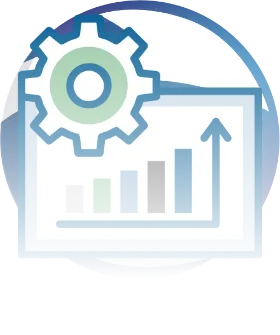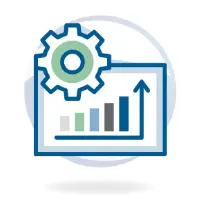PDM Introduction
If a PDM Implementation is to increase the productivity of all employees involved in the product lifecycle, good preparation is half the battle: On the one hand, on the technical side with the CAD PDM integration. On the other hand, so that all those who will later operate the system have an easy time.

PDM Implementation: Installation and Configuration

Simple installation
The installation of the GAIN Collaboration System is simple and time-saving. The GAIN Collaboration installation directory consists of a server and a client package. Both packages can be installed automatically one after the other.

Flexible configuration
Afterwards GAIN Collaboration is ready for use. Now individual configurations can be defined: From the basic configuration of the system to the adjustments of masks and interfaces to the database adjustment.
PDM Migration: Systems, Data, Functions

CAD PDM Migration
PDM Migration means the flow or process of transferring data from one Product Data Management System to another. Depending on the circumstances in a company, the effort required for PDM integration can vary.
After detailed planning and analysis of the data to be migrated, it should be cleansed for the benefit of data structure and integrity.
For the actual migration, we use proven, comprehensive migration programs: For example, to determine and transfer properties to the database. Or to read references from documents and store them in the database. The automatic creation of neutral files such as PDF formats of drawings is also possible via CAD PDM migration.
Finally, we check whether all data is available in GAIN Collaboration and adjust it if necessary. Last but not least, we naturally check the smooth functioning of any workflows and processes that have been transferred.

Performed PDM migrations
to GAIN Collaboration (examples)
- Autodesk Productstream Professional (PSP)
Data: AutoCAD, Autodesk Inventor, AutoCAD Mechanical
Example PDM Migration - Autodesk Vault
data: Mechanical Desktop, AutoCAD
Example PDM Migration - PDM 9000
- SmarTeam
PDM implementation
as a service or for do-it-yourselfer
In service Step by Step
For a smooth PDM implementation, we first analyze your current environment (files, storage). We then define your wishes and goals for your PDM system and coordinate all relevant key data with you.
Then you can test the PDM system GAIN Collaboration with your specific requirements: For this purpose we pre-configure your requirements internally and provide you with a test environment. Once the tests have been passed, the company-wide rollout takes place – the actual PDM implementation.
PDM implementation for do-it-yourselfer
With the necessary technical background knowledge you install and configure GAIN Collaboration yourself on a server and the desired workstations (clients). Of course, we or our system partners will be happy to assist you in this case at any time.



